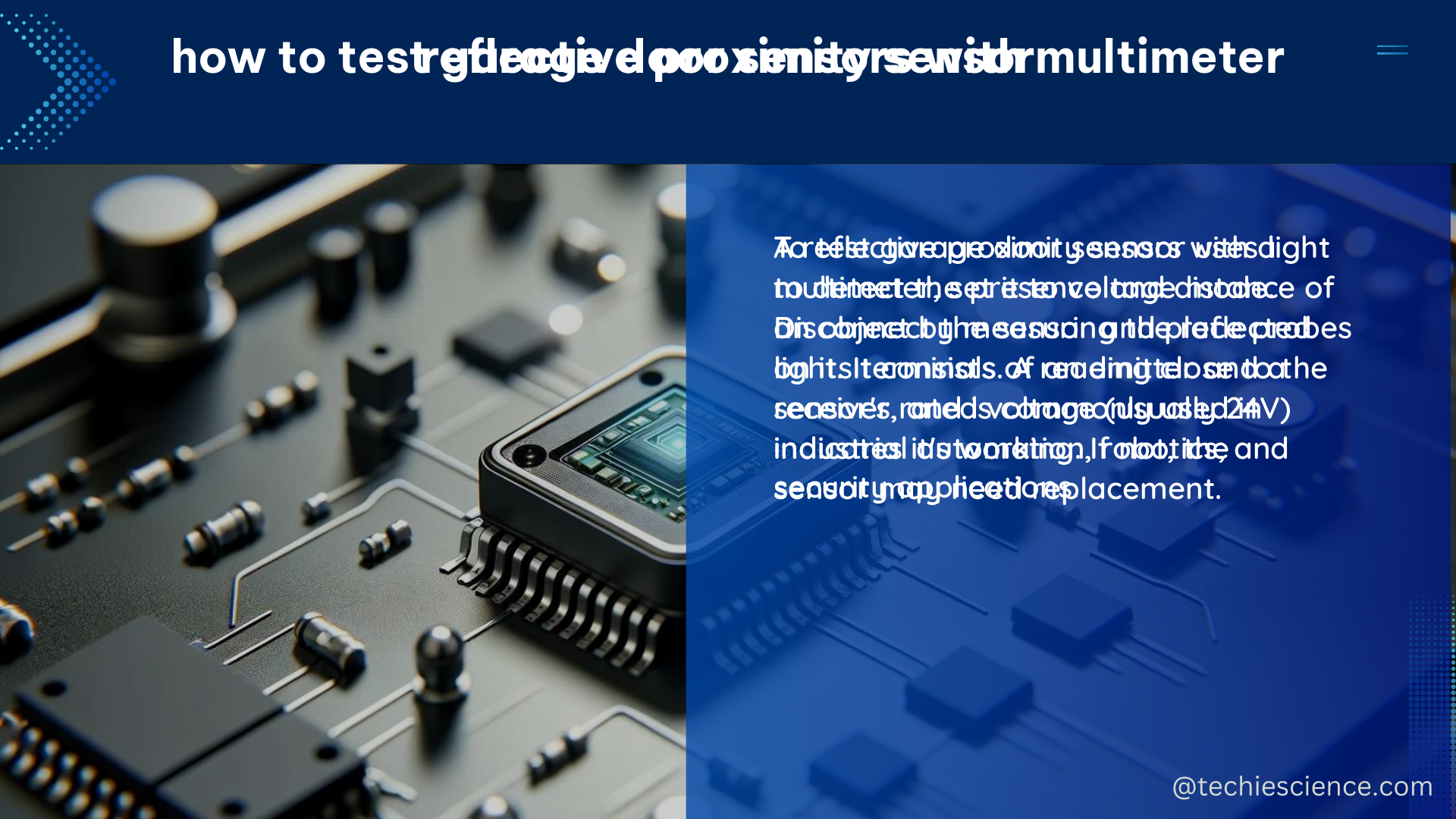Reflective proximity sensors are versatile and affordable components that can be used in a wide range of applications, from industrial automation to security systems. These sensors detect the presence or absence of an object by emitting a beam of light and measuring the amount of light that is reflected back. With their ability to operate without physical contact, reflective proximity sensors have become an essential tool for many DIY projects and applications.
Understanding the Basics of Reflective Proximity Sensors
Reflective proximity sensors typically use infrared (IR) light, which is not visible to the human eye. These sensors can be divided into two main categories: through-beam sensing and retro-reflective sensing.
Through-Beam Sensing
Through-beam sensors use a separate emitter and receiver, with the emitter and receiver aligned so that the beam of light passes through the sensing area. When an object interrupts the beam of light, the receiver detects the change in light intensity, triggering the sensor’s output.
Retro-Reflective Sensing
Retro-reflective sensors, on the other hand, use a single housing for the emitter and receiver, with the emitted light being reflected back to the receiver by a reflector. When an object enters the sensing area, it disrupts the reflected light, causing the sensor to detect the presence of the object.
Key Specifications of Reflective Proximity Sensors

When selecting a reflective proximity sensor for a particular application, it is important to consider the following technical specifications:
Sensing Distance
The sensing distance is the maximum distance at which the sensor can reliably detect an object. This distance depends on factors such as the power of the emitted light, the sensitivity of the receiver, and the reflectivity of the object being detected.
| Sensor Model | Sensing Distance |
|---|---|
| Omron E3JK-R4M1 | 0.1 to 2 meters |
| Sick WL12-2P430 | 0.05 to 3 meters |
| Banner Q45VR | 0.1 to 5 meters |
Response Time
The response time is the time it takes for the sensor to detect the presence or absence of an object. Faster response times are generally preferred for applications that require quick reactions, such as in industrial automation or security systems.
| Sensor Model | Response Time |
|---|---|
| Omron E3JK-R4M1 | 1 ms |
| Sick WL12-2P430 | 0.5 ms |
| Banner Q45VR | 0.5 ms |
Operating Temperature Range
The operating temperature range is the temperature range in which the sensor can operate reliably. This is an important consideration for applications in harsh environments or where the sensor may be exposed to extreme temperatures.
| Sensor Model | Operating Temperature Range |
|---|---|
| Omron E3JK-R4M1 | -25°C to 55°C |
| Sick WL12-2P430 | -40°C to 60°C |
| Banner Q45VR | -40°C to 70°C |
Supply Voltage
The supply voltage is the voltage required to power the sensor. This is an important consideration when integrating the sensor into a larger system or when using it in a DIY project.
| Sensor Model | Supply Voltage |
|---|---|
| Omron E3JK-R4M1 | 12 to 24 VDC |
| Sick WL12-2P430 | 10 to 30 VDC |
| Banner Q45VR | 10 to 30 VDC |
Output Signal
The output signal is the type of signal that the sensor produces when it detects an object. This can be an analog voltage, a digital pulse, or a more complex communication protocol, depending on the sensor model and the application requirements.
| Sensor Model | Output Signal |
|---|---|
| Omron E3JK-R4M1 | NPN or PNP digital output |
| Sick WL12-2P430 | 4-20 mA analog output |
| Banner Q45VR | IO-Link digital communication |
Housing Material
The housing material is the material that the sensor’s enclosure is made of, which can affect the sensor’s durability and resistance to environmental factors such as moisture, chemicals, or impact.
| Sensor Model | Housing Material |
|---|---|
| Omron E3JK-R4M1 | Plastic |
| Sick WL12-2P430 | Metal |
| Banner Q45VR | Plastic |
Reflective Proximity Sensors in DIY Projects
Reflective proximity sensors are popular choices for DIY projects due to their versatility and affordability. One example of a commonly used sensor in DIY applications is the Si1133 photodiode, which can be used to measure illuminance and can be integrated with microcontrollers like Arduino or Raspberry Pi to log environmental data.
When using reflective proximity sensors in DIY projects, it is important to consider the sensor’s technical specifications and how they align with the project’s requirements. Additionally, proper wiring, programming, and integration with other components are crucial for the successful implementation of the sensor in a DIY project.
Conclusion
Reflective proximity sensors are powerful tools that can be used in a wide range of applications, from industrial automation to DIY projects. By understanding the key specifications of these sensors, such as sensing distance, response time, operating temperature range, supply voltage, output signal, and housing material, you can select the right sensor for your specific needs and successfully integrate it into your projects. With the wealth of information and resources available, DIY enthusiasts can leverage the capabilities of reflective proximity sensors to create innovative and practical solutions.
References:
- How Light Sensors Work
- Introduction to Photoelectric Sensors
- Context Becomes Content: Sensor Data for Computer-Supported Reflective Learning
- Omron E3JK-R4M1 Datasheet
- Sick WL12-2P430 Datasheet
- Banner Q45VR Datasheet

The lambdageeks.com Core SME Team is a group of experienced subject matter experts from diverse scientific and technical fields including Physics, Chemistry, Technology,Electronics & Electrical Engineering, Automotive, Mechanical Engineering. Our team collaborates to create high-quality, well-researched articles on a wide range of science and technology topics for the lambdageeks.com website.
All Our Senior SME are having more than 7 Years of experience in the respective fields . They are either Working Industry Professionals or assocaited With different Universities. Refer Our Authors Page to get to know About our Core SMEs.